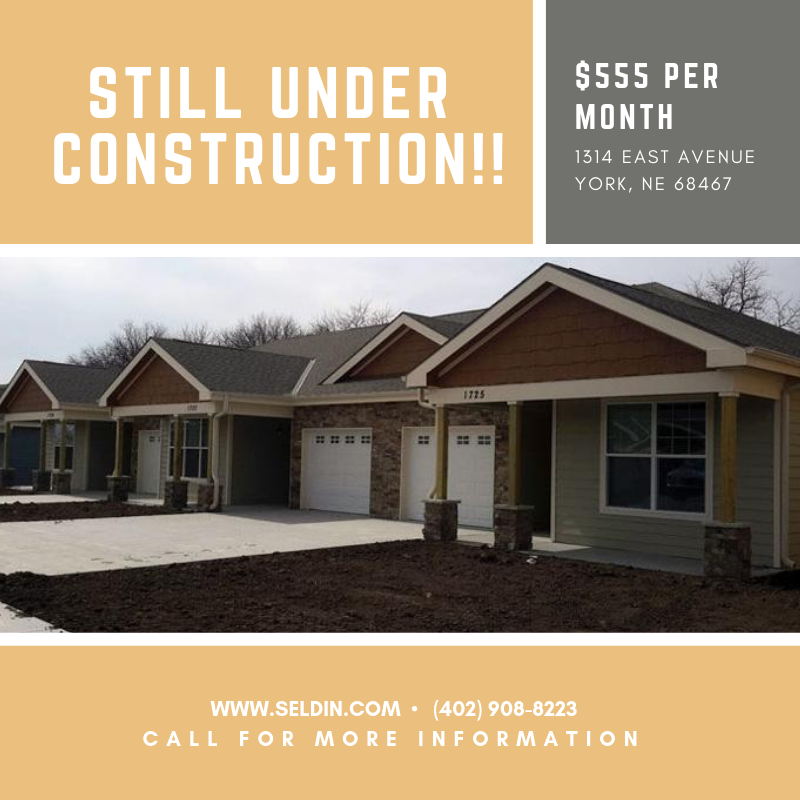
York County Housing Development Projects Are Critical for Future Growth
April 6, 2020
York County Development Corporation has taken a proactive approach to increasing the number of housing units being built in York County, Nebraska. By working with partners, stakeholders, developers and the community we have been able to generate new housing starts at record levels. Our goal is to continue to increase the number of quality housing units available in the county, with a target of 588 new units completed by 2025.
Workforce Housing is Critical to Future Growth
To support the growth in our local businesses, it is necessary to build a steady supply of workforce housing. This enables businesses to continue their recruiting efforts and for local college graduates to remain in York after earning their degrees. We have a wonderful resource with York College and many graduates would stay in the area if the right job and housing opportunities were made available to them. This is why meeting our target goal of 588 housing units is so important.
Rental Housing is Also Needed
There is also a continued need for rental housing units, including low-income housing. Local businesses depend on workers coming into the area and typically, they will start their time in York in a rental home or commuting in from outside the county. Our goal is to ensure that there are enough rental units for these workers to live in York, rather than just work here. This way they spend the money they earn within York County.
When it comes to low-income housing, units are required in order to attract and keep the workforce that typically fills jobs in local restaurants and other service-based industries. There is a misconception that low-income housing only applies to those who are unemployed. In truth, most of the people who would live in these units will be working - just at wages that are below the national average. Still, these workers are critical to running our economy. We need them here and so we must provide housing at rates that are affordable for their families. The duplex portion of the Prairie Fire Development project is an example of this type of housing. They used low-income tax credits to help fund the project. The demand has been so high that they have a waiting list and are looking at building a Phase II.
In future articles we will explore current housing projects in detail and the impact they are making on our community.
